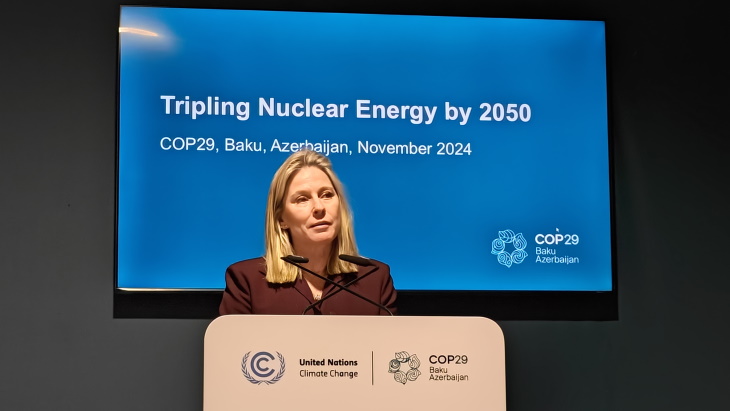Harmony vision presented in Brussels
 World Nuclear Association yesterday presented its Harmony programme to members of Foratom, the Brussels-based trade association for the nuclear energy industry in Europe. Harmony is the nuclear industry vision for the future of electricity and how nuclear energy can help the world achieve its 2-degree climate target.
World Nuclear Association yesterday presented its Harmony programme to members of Foratom, the Brussels-based trade association for the nuclear energy industry in Europe. Harmony is the nuclear industry vision for the future of electricity and how nuclear energy can help the world achieve its 2-degree climate target.World Nuclear Association yesterday presented its Harmony programme to members of Foratom, the Brussels-based trade association for the nuclear energy industry in Europe. Harmony is the nuclear industry vision for the future of electricity and how nuclear energy can help the world achieve its 2-degree climate target.
.jpg) |
| Agneta Rising presenting the Harmony programme (Image: Forum Nucléaire) |
According to the Association, nuclear power capacity will need to grow significantly around the world in order to meet the International Energy Agency's 2-degree scenario, Foratom noted.
According to the Foratom statement, World Nuclear Association Director General Agneta Rising said: "By 2050, nuclear energy must account for 25% of energy generation if we are to meet our climate targets. With nuclear making up 11% of generation in 2014, an extra 1000 GWe in nuclear capacity will need to be built by 2050. However, meeting this goal will not be easy."
Harmony evaluates barriers and recommended solutions. First, electricity market failures: Ensure a level playing field for all low carbon energy sources including nuclear. Second, regulatory barriers: Harmonise international regulatory processes to ensure consistency, efficiency and predictability. Third, misconception of risks and benefits: Address public concerns and put the health, environmental and safety risks of nuclear in perspective compared to other power generation technologies.
Yves Desbazeille, Foratom director general, said the organisation "very much welcomes" the work on the Harmony programme. Europe "faces many of the same challenges, and opportunities, as other regions", he said. "Globally, the EU is the region which emits the lowest amount of CO2 emissions from electricity generation thanks to nuclear energy. We look forward to continuing our fruitful cooperation with the WNA and making sure our positive messages about the real value of nuclear energy resonate across Europe," he added.
Foratom comprises 15 national nuclear associations and through these it represents nearly 800 European companies working in the industry and supporting around 800,000 jobs.
Researched and written
by World Nuclear News

_99697.jpg)

_53540.jpg)





_66488.jpg)


